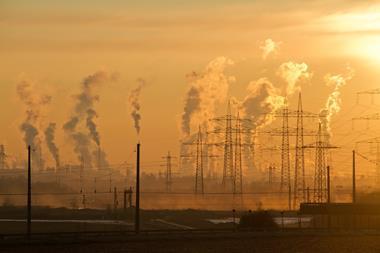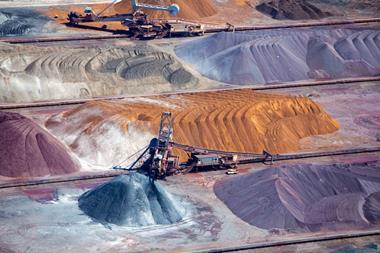This report was researched and compiled by Christopher Hindle and Marie Verpilleux of Global Business Reports
As India takes ever bolder steps into what many believe to be an Asian century, the country's importance to global markets is increasingly profound. Driven by a staggering set of demographics - the population is expected to outgrow that of China by 2032 - India is widely touted to become one of the three biggest global economies within a generation.
If the rise of India seems dramatic today, it is perhaps because not so long ago the country appeared in the Western imagination as a poor, backward, chaotic nation, prone to regional instability and the burden of innumerable divisions among its many millions. Such is the sheer diversity of the population that on gaining its independence in 1947, Winston Churchill remarked that the notion of India as a state was little more than a "geographical expression;no more a united nation than the Equator".
Despite the bloody separation of Pakistan, however, the country did manage to belie any predictions of disintegration. Efforts at nation building and the trajectory set by independent India's first prime minister, Nehru, towards building a self sufficient state-led economy, however, appear to have undermined the country's growth, especially in relation to the so-called Asian Tigers. Between 1950 and 1980, the country's performance, with GDP growth at little over 3% a year - only negligibly higher than that of its population - demonstrated an inertia that was derisively labelled as the "Hindu rate of growth". The notion that India could soon become an economic superpower seemed an unlikely prospect.
For many, the first recognition of India's apparent ascendance was in 2003 when Goldman Sachs came out with its concept of the BRICs, which saw India marked alongside Brazil, Russia and China as a group of high-population countries that would dominate the world economy by 2050. Despite India's emerging IT sector and its role in countering the supposed threat of the Y2K bug, however, the reception to the report was only lukewarm - limited capital trickled into the India's stock markets during the first few years of the new millennium and it was China, with its recent WTO accession, that claimed the lion's share. Today, however, all the BRICs have outperformed the most optimistic projections. Goldman Sachs had predicted that these countries would account for 10% of world GDP by the end of the decade - they have already achieved 15%. As Ranu Vohra, managing director & CEO of Avendus, one of India's leading investment banks, comments: "A rethink has happened. Everyone is now asking themselves, ‘what's my BRICs strategy?'" Furthermore, India's position in the group has evolved. While, given their immense size, it is sometimes said that really China and India are the "only BRICs in the wall". India, as the most transparent and firmly democratic in the group, now enjoys the confidence of international investors in a unique way. "The track record that institutional investors have in taking returns out of India is phenomenal: there isn't another of the BRICs that has realised this in the same way," continues Vohra.
India's transition from economic basket case to an emerging economic power was spurred on in the early 1990s by a balance of payments crisis that saw a boatload of gold shipped out of India bound for London. This shock was sufficient to herald a package of market-oriented reforms, introduced in 1991 by the then finance minister and current prime minister, Manmohan Singh, aimed at unleashing the country's huge potential. Through the gradual opening of the economy, these reforms, by all outward indications, have met with spectacular success: foreign exchange levels have risen to over $300bn (€193bn) as of March 2008, up from $5.8bn in March 1991. Federal and state budget deficits have decreased significantly and the government has been able to press ahead with the privatisation of publicly owned companies and the opening of certain sectors to private and foreign capital.
Last year the country's GDP growth rate reached 9.4%, putting the Indian economy amongst the fastest growing in the world, the second in Asia behind only China, and sufficient to propel the country into the so-called trillion dollar club of the world's largest economies. Ranked by the IMF as the twelfth largest economy in the world in 2007 ($1.1trn), India jumps to number four when measured in terms of purchasing power parity (PPP). Thanks to the legacy of the English language, India is able to capitalise on a large pool of educated, English-speaking people and this is combined with common law-based legal traditions and institutions that many consider give India an advantage over other emerging economies, notably China.
Fuelling the expansion has been a rapid growth in services, including call centres, software design and back-office outsourcing for multinational corporations. If China is the world's workshop then India has quickly become its service centre. But despite seeming to have skipped a stage in the progression from an agriculture based economy to one based on services, India's strengths as a future manufacturing hub should not be overlooked. The ability of Indian companies to design and produce well-made goods at low cost is already helping India increase its role as a major exporter. In 2007, exports totalled some $140bn, against imports of around $225bn. Textiles, jewellery, engineering products and software are the major export goods, while crude oil, machineries, fertilisers, and chemicals make up the bulk of the country's imports. India's most important trading partners are the United States, the European Union, and China.
The country's increased presence on the world stage is also illustrated by a host of cross-border takeovers in the past few years by Indian companies that have transformed themselves into global players almost overnight. Of note, in 2007, were Tata Steel's $11bn acquisition of Anglo-Dutch steel group, Corus and Hindalco's takeover of Novelis, the aluminium giant. More recently, national pride was swollen by Tata Motors' acquisition of two of the world's best known car marques, Jaguar and Land Rover. Indians also delight in the achievements of Indian expatriate Lakshmi Mittal who in building the world's first $120bn-plus steel company is now just one of a growing number of Indians who appear on Forbes' annual list of the world's super-rich.
Leaving aside India Inc's growing influence on global markets, however, it is the domestic market where the strength of the Indian growth story lies. "The Indian economy is 65% domestically oriented and domestic conditions have not been better in my life," notes Manish Chokhani, director of Enam Securities. "If you think of the trends in India, it's all about domestic consumption and that's where the opportunities are: telecoms, financial services, retail, multiplexes, natural resources, and real estate. The growth being experienced in these sectors has led to the theory that the economy can decouple from the global economy; that India can continue to enjoy 8-9% GDP growth rates even if the rest of the world runs into trouble."
Though many analysts' growth forecasts for the short-term have been downgraded in light of the changing economic environment globally and the overspill from the US sub-prime crisis, over a longer time frame, today's success looks set to be dwarfed by what is to come. With $500bn in infrastructure spending in the pipeline, India's Planning Commission maintains that the economy can grow by 9% per year, on average, over the next five-year planning period (2008-2012). This is a trajectory of growth that, by 2050, would see India surpass the US to become the second biggest economy in the world after China. As Vinay Gairola of Atlantis Investment Advisors remarks: "The first trillion dollar economy took 60 years to create; the next looks like coming in the space of just six."
A booming economy, hefty corporate profits and an unprecedented flow of foreign investment into India have combined to cause a spectacular surge in Indian share prices. Over the past five years to 20 February this year, the Bombay Stock Exchange's 30-stock Sensitive Index, or Sensex, has enjoyed a bull run with an annualised return of 43% (in US dollar terms), with real estate, banking and information-technology stocks at the forefront of the boom. The picture for Indian stocks is, however, now a little murkier. Amid concerns about the global economic slowdown stemming from the US sub-prime crisis, and the rupee's appreciation against the dollar, which is detrimental to the efforts of Indian exporters, volatility has increased in the markets. Having set a record high of 21,208 on 10 January, the index plunged below 15,000 by mid-March. Although there has since been a slight recovery, questions are now being raised by many investors concerned as to whether Indian funds and stocks can sustain the unprecedented growth of the last decade or whether the idea of decoupling from the world economy was just a flight of fancy. "Because of our domestic consumption, the economy remains very stable and with a low correlation to the US - so economically, there is not much of a risk," maintains Ajay Bagga, CEO of Lotus India Asset Management. "However, the economy may indeed be decoupled, but markets are still sensitive and really any global contagion spreads very fast because of the vast capital flows. At a certain point, though, the market will align with the economy and over the long-term it will have to track this 8-9% GDP growth story."
Of course, there are risks to the fundamentals of the growth story. A rise in protectionism, supply-side constraints, education, labour market reforms and environmental degradation are often cited, but the two main concerns at present appear to be inflation and political risk. With a rapidly growing economy, the government is at pains to avoid a severe increase in income inequality, which in India's case could manifest itself in a growing rural-versus-urban polarisation and an educated-versus-uneducated divide. Populist measures present in the recent budget to assuage the concerns of farmers are testament to the government's desire for "inclusive" growth.
India's vision is to be part of the league of developed economies by 2020. While the magnitude of this task is immense, Bollywood and cricket aside, India is already the world's largest democracy, a nuclear power, and home to a sixth of the world's people. As such, a place for India's at the world's top table looks increasingly assured in the years ahead.












No comments yet